The 5 Easiest, Most Effective Exercises to Do at Home
The least intimidating moves for people who hate working out
1 of 9
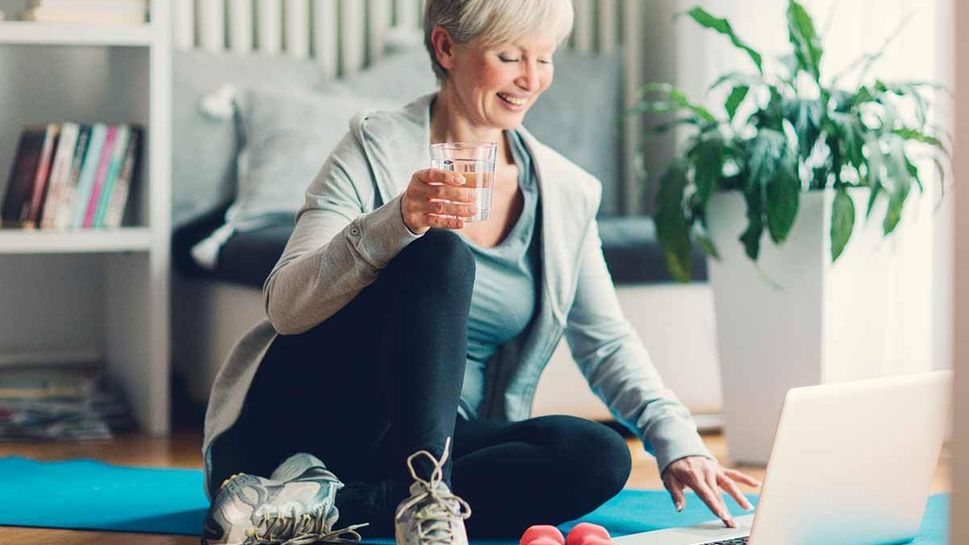
(This article appeared previously on Grandparents.com)
It's true what they say, the first step is always the hardest — especially when you're starting an exercise regimen. Beyond the effort exercise requires, swirling fears of injury, not knowing what to do or even a physical impairment could be holding you back.
What if we offered you a medley of exercises that are so easy and so safe that anyone can do them, and see results? "We're all living longer — it's not time to wind down, it's time to ramp up," says Chris Freytag, a 50-year-old trainer certified by the American Council on Exercise and founder of Gethealthyu.com. "As an empty-nester, you're finally back to having some 'me' time when you can invest in your health. You're never too old, and it's never too late."
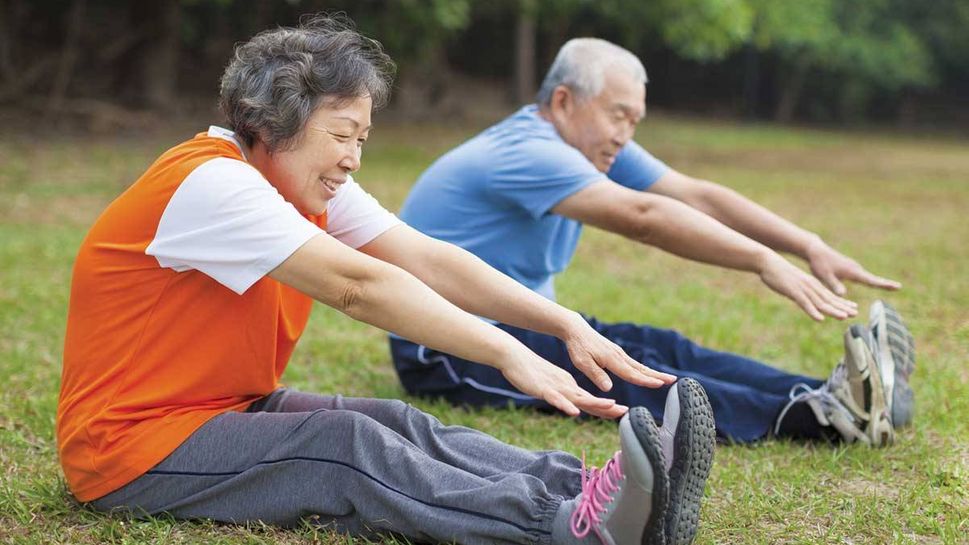
First, a Caution for Beginners
Not every exercise is good for every person, says Kenneth Miller, a practicing physical therapist and a member of the Academy of Geriatric Physical Therapy. Before trying a new fitness regimen, discuss what you want to do with your doctor or a physical therapist to get their recommendations and instruction, he advises. If you feel confident enough to go it on your own, be on alert for any signs of distress. "If you feel sharp pain, shortness of breath, dizziness or tightness in the chest, stop immediately and seek medical attention," says Miller.
That said, the following exercises have a very low risk of injury if done properly, says Freytag, and allow you to build intensity as you build your strength and confidence. "You have to allow yourself to begin somewhere," says Freytag. "As with anything in life, too much too soon is not a good idea."
Now, on to the exercises!
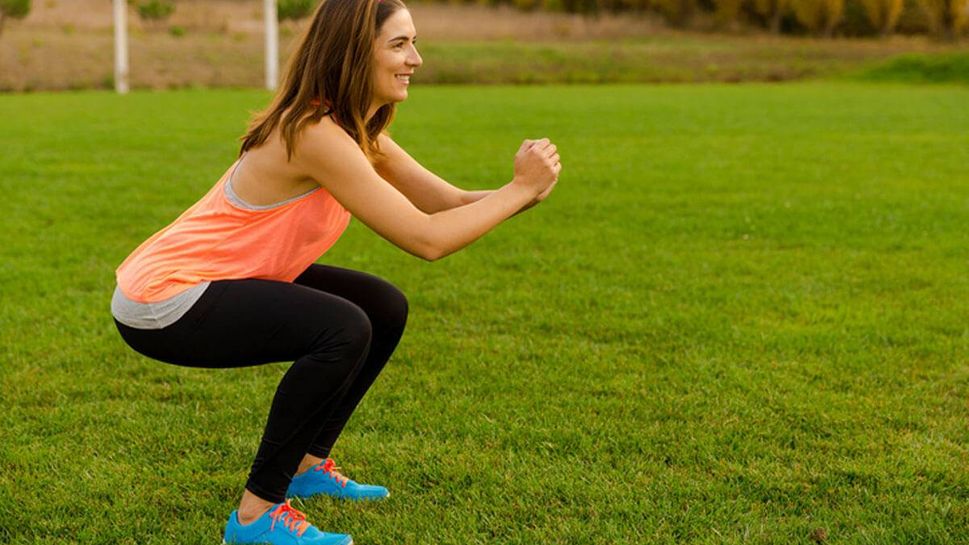
1. Chair Squats
Strengthens: every muscle in your legs, from your calf up through your gluteus maximus (a.k.a. your butt)
You probably already do this exercise at least 10 times a day. Each time you sit down and stand up, you are doing a squat. The secret is: Do more of them — and then progress to an unassisted squat. "Start with chair behind you, sit down (gently), and stand up," says Freytag. "There's no fear of falling." Once you feel comfortable with that exercise, move the chair to the side of you and hold on to it as a balancing aid while you do a squat. When you feel confident with that, get rid of the chair all together and squat unassisted.
"Leg strength is the most important thing to maintain as you age, but squats are really a whole-body exercise, because you have to coordinate from the top of your head down to your feet," says Jude Sullivan, senior clinical exercise physiologist at University of Wisconsin Health. "Remember to keep your hips over your knees and your knees over your feet. Repeat that little mantra in your head."
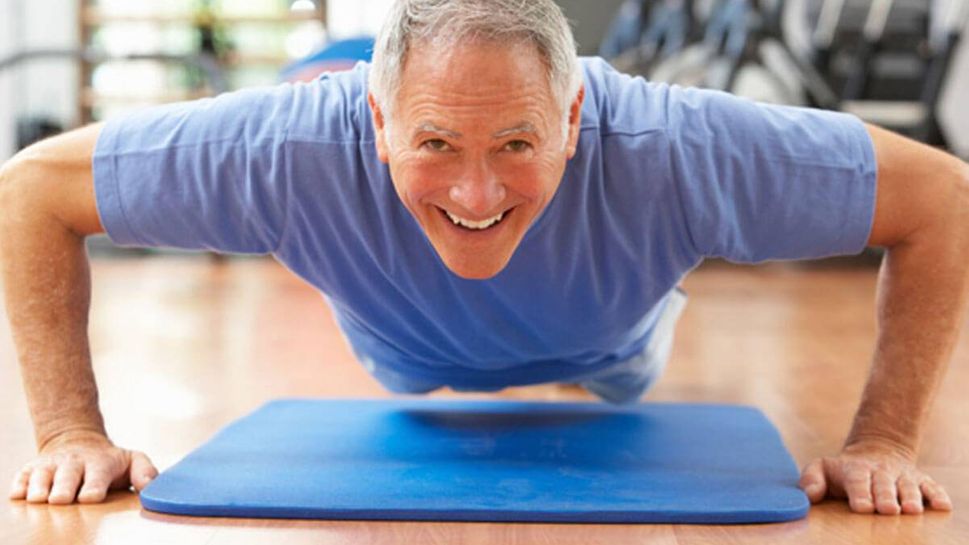
2. Push-ups
Strengthens: the back of your arms, your shoulders, your chest and your abs
Most people run for the hills when they hear the word "push-up," but with a little modification, there's no need to fear this titan of arm exercises. "Push-up is the jackpot exercise when it comes to upper body — it works your shoulders, chest and arms," says Freytag, who regularly trains women in their 50s and 60s. Of the options below, whichever position feels the most comfortable for you is the right one to start with.
Beginners can start by doing wall push-ups: Stand with your feet hip-distance apart and your arms extended straight out from your shoulder, palms flat on the wall. Bend your arms in a push-up motion, keeping your body in a straight line, and extend your arms back to straight.
Then move to table-top push-ups: Grip the edge of a table, extend your arms straight and position your feet far enough away from the table so your back and legs form a straight line, and do a push-up that way.
Feel confident? Move on to kneeling push-ups: Position yourself on the floor with your palms below your shoulders, your knees down, and your back and thighs in a straight line, and do a push-up that way.
When you're ready, proceed to full push-ups, with your knees lifted.
The most important thing to remember when doing any type of push-up is to maintain a straight line from your head to your toes (or knees, if down), says Sullivan. "Sometimes people are so focused on their shoulders, they ignore their back and let their pelvis sag," he says. If you hold your body in a line, you get the most strength-building benefits, plus you protect yourself from a potential back injury.
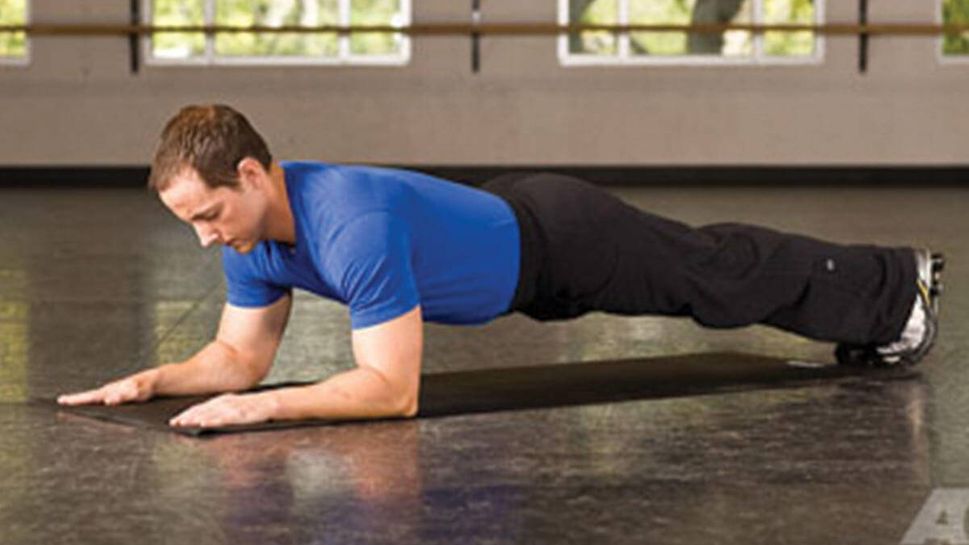
3. Planks
Strengthens: every muscle in your body, from your toes to your neck
For overall muscle strengthening with absolutely no stress on your joints (save your wrists, but you can modify that!), the plank is a power player. "It's a total body experience," says Sullivan. If you're comfortable starting from the floor, position yourself so that your weight is distributed on your forearms and your knees, and hold your body in a straight line from your knees to your head. "If that feels good, move to your toes," says Freytag. If your wrists are strong enough, move to your hands — position them directly below your shoulders. "Your ultimate goal is to hold your body in one long line. Start with 10 seconds and work your way up."
As with a push-up, make sure to set your shoulders and don't allow your torso to sag, which can create compression and pain in your lower back, says Sullivan. "It's a static position, but there's a lot of work going to hold it."

4. Bridges
Strengthens: the backs of your thighs and your posterior
Like planks, glute bridges are super effective, yet low-impact on your joints. To do glute bridges, lay on your back and bend your knees, keeping your feet flat on the floor and your knees hip-distance apart. Position your feet as close to your bottom as you can without feeling knee pain, so that your shins are perpendicular to the floor. Contract your stomach muscles and slowly lift your butt off the floor, keeping your back straight and squeezing your glutes. When you've lifted it as high as you feel comfortable doing, slowly lower your butt to the floor.
"Rather than focusing on raising your hips, focus on pushing your heels into floor," says Sullivan. "The reactive force is that your pelvis will come up. Always keep your torso in a straight line."
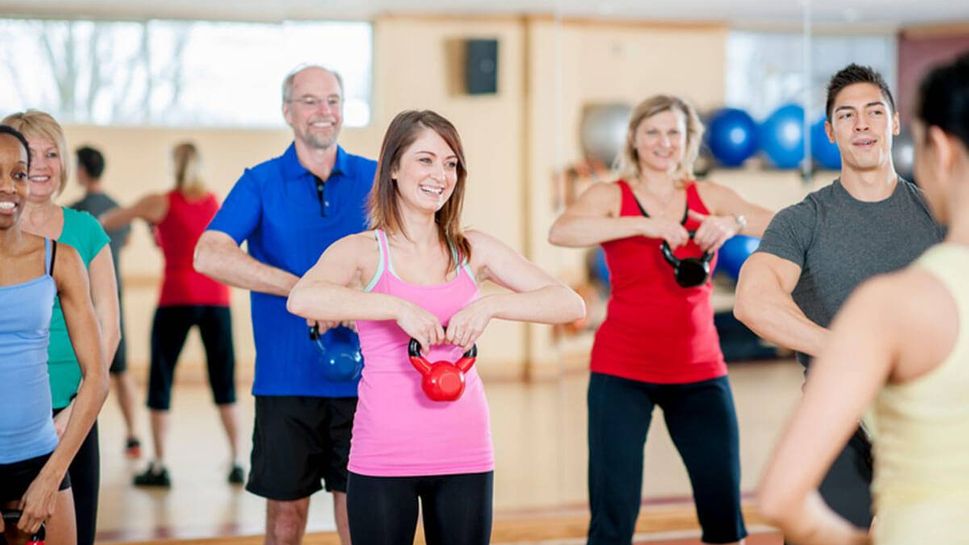
5. Deadlifts
Strengthens: legs, hands, forearms and back
Turn up the intensity of your squats by adding weight, when you're ready. Plus, there's no need to buy a medicine ball or other extra equipment. "Think about what you have in your house," says Sullivan. "Take an empty milk or water jug and fill it with sand or water to give it the weight you want."
To do deadlifts, stand in a wide stance, with your feet pointed forward about double-hip's distance apart. Hold a weight in your hands, with your arms straight down. Using your legs, gently lower the weight to the floor, bending your hips, knees and ankles and keeping your back straight. Slowly straighten your legs to your original standing position. Repeat.
"The closer you keep the weight to your body, the safer it will be for your back," says Sullivan. "Lower it as far as your flexibility or strength allows. Seeing how close you can get to the ground is a nice way to evaluate your progress."
Next: Tips for getting started and staying motivated
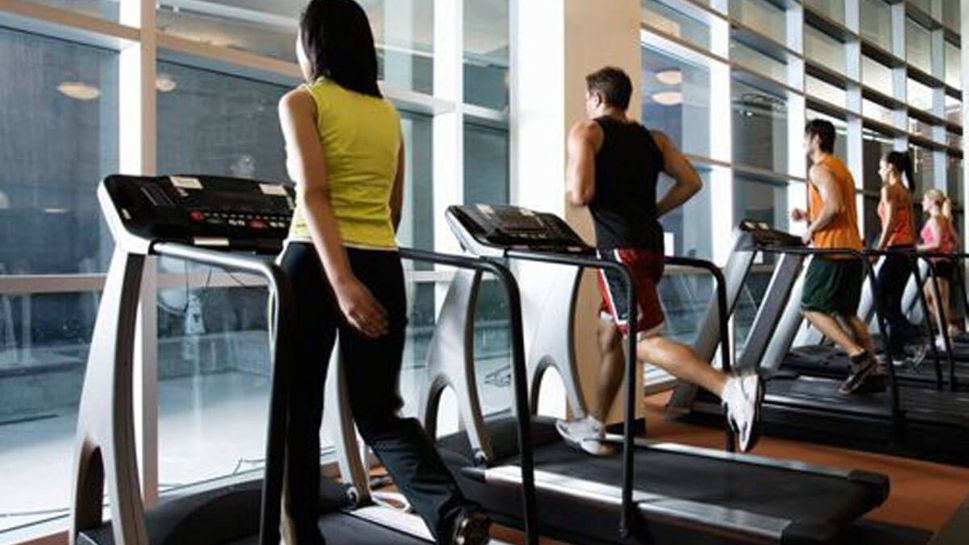
How Much Exercise Is Enough?
For each exercise, start with five repetitions and see how you feel the next day, advises Freytag. If you have no soreness and no pain, gradually increase the number of repetitions you do. "Three sets of 15 repetitions is the goal," she says. Pushing yourself beyond your comfort zone too quickly is likely to result in injury or burnout. And remember to breathe evenly through the exertion. "Those having diagnosed or uncontrolled high blood pressure, when strength training, should be aware of their breathing," cautions Sullivan.
The Centers for Disease Control and Prevention recommends that adults do muscle-strengthening activities two or more times a week.
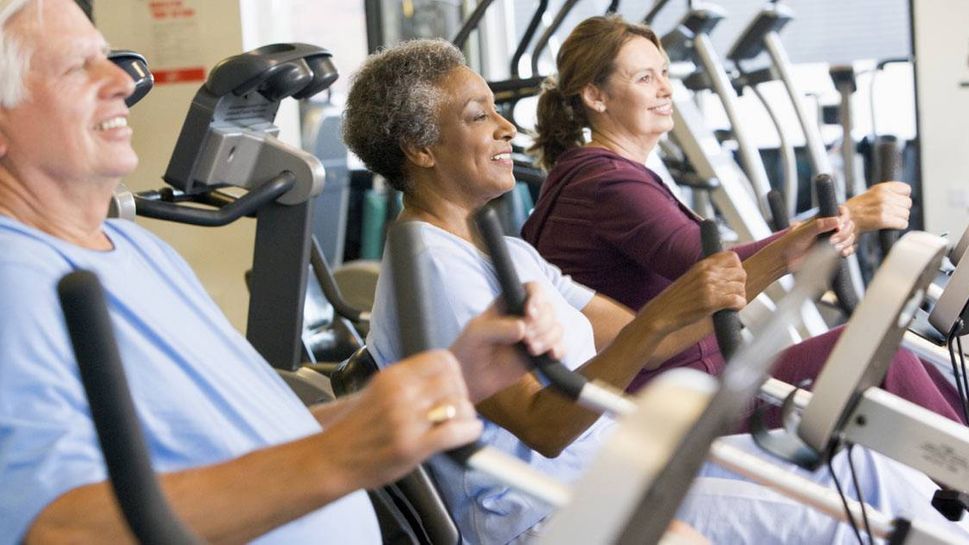
The Best Workout Motivation
For women over 50, losing weight and getting healthy are actually poor motivators in the workout game, says Michelle Segar, in an article for More magazine. Who has time for those long-range goals? The best motivator is the uptick in overall well-being, which includes the immediate mood boost and stress reduction resulting from exercise, as well as the long-term improvement in cognitive function and mobility, says Segar, director of the Sport, Health, and Activity Research and Policy Center at the University of Michigan and author of No Sweat! How the Simple Science of Motivation Can Bring You a Lifetime of Fitness.

